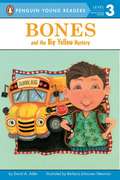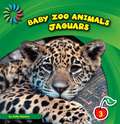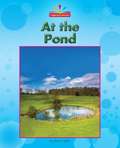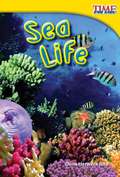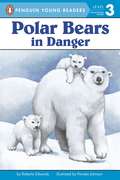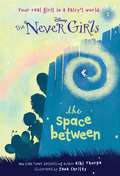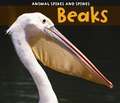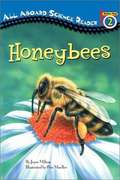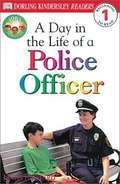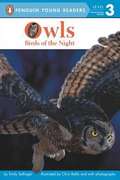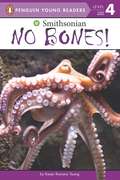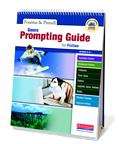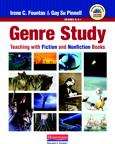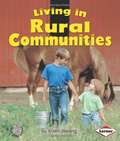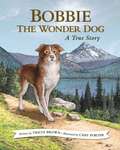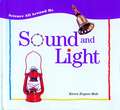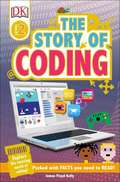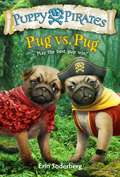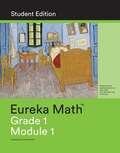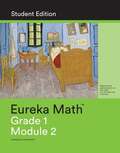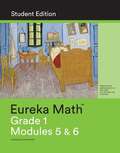- Table View
- List View
Bones and the Big Yellow Mystery
by David A. Adler Barbara Johansen NewmanWith his bag of detective tools in hand, Detective Jeffrey Bones can solve any mystery. Good thing, because Mr. Green has lost his school bus! Will Detective Bones be able to solve the case? Find out in this Level 3 reader!
At the Pond
by Mary Lindeen"Take a trip to a pond. See fish, cattails, dragonflies, turtles, and other interesting plants and animals that live there. Take a ride in the water on a canoe. You never know what you'll find at a pond! This informational text, nonfiction BeginningtoRead book contains highfrequency words and content vocabulary. This book can be paired with What's in the Pond, Dear Dragon?, its twin text fiction counterpart. Reading reinforcement pages include a word list and activities to strengthen early literacy skills, such as understanding the craft and structure of informational text, key vocabulary words, foundation skills, close reading, and fluency. Aligns with English Language Arts Standards for Grades K3. "
Sea Life
by Dona Herweck RiceFrom tide pools to the ocean, the sea is filled with amazing lifeforms! Early readers will be engaged from beginning to end with informational text, vivid photos, and a picture glossary of marine animals.
Polar Bears: In Danger
by Roberta Edwards Pamela JohnsonDid you know that a full-grown polar bear standing on his hind legs is as tall as an elephant? Polar bears are one of nature's most beautiful animals, but their home'the Arctic North'is in danger. Kids will love learning about these Arctic animals and finding out more about global warming.
Never Girls #2: The Space Between (Disney Fairies)
by Kiki Thorpe illustrated by RH DisneyThe Disney Fairies star in a magical all-new early chapter book series for kids ages 6 to 10-The Never Girls! It's not fair! Just as they were settling in at Pixie Hollow, Kate, Mia, Lainey, and Gabby have to go home! Tinker Bell says no kids have ever come back to Never Land, but Lainey refuses to believe it. Will she never get to ride a deer through the woods again? And how can she learn the languages of animals without the fairies' help? But even when they leave Never Land, its magic seems to follow them! That mouse in Lainey's kitchen-she's sure it was one of the fairies' dairy mice! Is there some kind of a splinter between the worlds?
From Cotton to T-shirt (Start to Finish, Second Series)
by Robin NelsonHow does cotton turn into a soft T-shirt? Follow each step in the production cycle--from growing cotton to wearing a comfy shirt--in this fascinating book!
Beaks (Animal Spikes and Spines)
by Rebecca RissmanThis title introduces readers to beaks, how they help animals to survive, and how different they can look.
Honeybees (All About Science Reader, Station Stop #2)
by Joyce Milton Peter R. Mueller Pete MuellerBzzz! Learn all about the life cycle of honeybees, how they make honey, and more. With fun bee facts and bright, realistic artwork, this Station Stop 2 easy reader will fly off bookshelves! I
A Day in a Life of a Police Officer (Level 1: Beginning to Read)
by Linda HaywardOfficer Ann Young and her partner drive their police car down the street. A little boy is lost. Can they help him? This unique Level 1 series accurately portrays real-life situations that help young children identify with and learn from while helping them improve their reading skills. Presented in classic DK style, young readers will enjoy photographically illustrated information in an entertaining package. For children who are just beginning to read and who have a limited vocabulary, these 32-page Level 1 books-about everything from tadpoles to puppies-use word repetition and simple sentences to convey meaning. Picture dictionary boxes with word labels "show" the meanings of words. These books contain between 400 and 450 words each, and they are 80 percent pictures and 20 percent text. The Dorling Kindersley Readers combine an enticing visual layout with high-interest, easy-to-read stories to captivate and delight young bookworms who are just getting started. Written by leading children's authors and compiled in consultation with literacy experts, these engaging books build reader confidence along with a lifelong appreciation for nonfiction, classic stories, and biographies. There is a DK Reader to interest every child at every level, from preschool to grade 4.
Owls: Birds of the Night (Penguin Young Readers, Level #3)
by Emily Sollinger Chris RallisDid you know that the biggest owl has a wingspan of five feet? That's big! The smallest owl is no bigger than an avocado. Filled with photographs and vivid illustrations, this book will teach you all about these beautiful birds. Excerpt: When the owlets are about one month old, they are ready to leave the nest. At first, owlets hop from branch to branch. They grab onto tree bark. They wander around on the ground. They practice flapping their wings. Look! They are flying! The owlets are now called fledglings(say: FLEJ-lings).
No Bones!
by Karen Romano Young"Octopuses, clams, sea worms, even coral- they're all marine invertebrates. Having no internal skeleton gives them an interesting shape-not to mention unusual ways of moving around, getting food, and protecting themselves. Fascinating underwater photography and lively, accessible text draw kids into the watery world of these cool ocean creatures. "
Genre Prompting Guide For Fiction
by Gay Su Pinnell Irene C. FountasThe prompts in these ready-reference flip charts are designed to help teachers guide students' inquiry toward explicit understandings of the characteristics of genres. Each prompting guide contains precise language for teaching readers how to focus their thinking and understanding of genres through inquiry. In the Genre Study Prompting Guide for Fiction, Fountas and Pinnell have organized fiction prompts by genre as well as by literary elements and structure. Help you and your students lay the groundwork for a lifetime of literacy exploration and an understanding of the following genres: Contemporary Realistic Fiction Historical Fiction Traditional Literature Folktales Fairy Tales Fables Legends Epics Ballads Myths Modern Fantasy Animal Fantasy Low Fantasy High Fantasy Science Fiction
Genre Study: Teaching With Fiction and Nonfiction Books
by Irene C. Fountas Gay Su PinnellGenre Study: Teaching with Fiction and Nonfiction Books is the foundational text of the Genre Study Suite. In exploring Genre Study, Fountas & Pinnell advocate teaching and learning in which students are actively engaged in developing genre understandings and applying their thinking to any genre. It is through using genre understandings that your students think, talk, and read texts with deeper understanding, and write effectively. Genre Study is a professional resource that teachers can use with students to embark on an exciting exploration into the study of genre. View Overview Webinar The Genre Study Suite Bundle is a comprehensive suite of resources that focuses on genre study through inquiry-based learning with an emphasis on reading comprehension and the craft of writing. An inquiry approach engages students in exploring texts so that they can notice and name the characteristics of each genre and construct a working definition that guides their thinking of reading and writing. This suite provides the tools needed to help you and your students lay the groundwork for a lifetime of literacy exploration. The bundle includes: Genre Study: Teaching with Fiction and Nonfiction Books Genre Study Quick Guide a companion to Genre Study: Teaching with Fiction and Nonfiction Books This spiral-bound companion to Genre Study: Teaching with Fiction and Nonfiction Books is designed to help you actively engage students in the exploration of texts so that they can notice and name genre characteristics, and construct working definitions that guide their thinking as readers and writers. This handy reference guide contains a master genre chart outlining the definition, key characteristics, and a list of mentor texts by genre. Genre Prompting Guide for Fiction and Genre Prompting Guide for Nonfiction, Poetry, and Test Taking are comprehensive tools that you can use to explore genres with your students during interactive read-aloud, Reader's workshop, Writer's workshop, guided reading lessons, shared reading, and intervention lessons. The prompts in these ready reference flip charts are designed to help teachers guide students' inquiry toward explicit understandings of the characteristics of genres. In the Genre Prompting Guides, Fountas & Pinnell have organized prompts by genre, and also literary elements and structure. Fiction Genres Realistic Fiction Historical Fiction Traditional Literature (including folktales, fairy tales, fables, epics, legends, ballads, and myths) Modern Fantasy (including simple animal fantasy, low fantasy, high fantasy, and science fiction) Nonfiction Genres Narrative Nonfiction Biography Autobiography Memoir Expository Nonfiction Procedural Texts Persuasive tests Forms of Poetry Lyrical poetry Narrative poetry Free Verse Haiku Limericks Concrete poems Test Taking Multiple Choice Questions Short Answer Questions Extended Response Questions
Living in Rural Communities
by Kristin SterlingAn introduction to the common characteristics of a rural community.
Bobbie The Wonder Dog: A True Story
by Tricia Brown Cary PorterBob was an average-looking collie puppy in every way, except for his bobbed tail . . . and maybe that's why the Brazier family named him Bob, or Bobbie. <P><P>But he was average in no other way. <P>In 1923, Bobbie joined Frank and Elizabeth Brazier for a cross-country drive from Silverton, Oregon, to Indiana, Frank's home state, where they planned to visit family. During a stop in Indiana, Bobbie was chased off by loose dogs, and after a week of searching and placing newspaper ads, the broken-hearted Braziers had to give up and start the drive home. <P><P>Six months to the day after he was lost in Indiana, a very thin Bobbie was spotted on a Silverton sidewalk, his coat matted, his paws raw from wear. Unbelievable as it seemed, the three-year-old dog had WALKED almost 2,800 miles to get back home. <P><P>Though weak and tired, Bobbie went berserk with joy when he was reunited with his family, and from that day, all of their lives changed. In the weeks and months that followed, his story tore across the country in newspapers and even in a hardcover collection of pet stories. <P><P>He was the main attraction at an Oregon home-builders convention in Portland, where thousands lined up to pet him, and he starred in a short feature film. <P><P>Also, the Braziers eventually heard from people along Bobbie's homeward-bound route, places where he'd stopped long enough to recoup, and then he was gone again. These stories verified their thinking. Bobbie had done the impossible. <P><P> When Bobbie died, he was buried in Portland, Oregon, by the Oregon Humane Society. Rin Tin-Tin was there to lay a wreath at his funeral, which was officiated by the mayor of Portland. <P><P>This incredible story is all true, and the origins of Lassie Come Home are said to be traced to the story of Bob of Silverton, also known as Bobbie, the Wonder Dog, a Scotch collie mix.
Texts for English Language Development [Grade 1]
by Benchmark Education Co. Llc StaffNIMAC-sourced textbook.Created specifically for California requirements.
Science All Around Me: Sound and Light
by Karen Bryant-MoleExplains the basic principles of sound and light through looking at everyday experiences and direct observation.
Is There Life in Outer Space?
by Franklyn M. Branley Edward Miller BranleyLife In Outer Space Bears and birds, people and planets -- many things live on planet Earth. But do they live anywhere else? For a long time people have wondered about that. Maybe you have, too. Read and find out how scientists search for signs of life in outer space.
DK Readers Level 2: The Story of Coding, First American Edition
by James Floyd KellyThis book is part of an exciting four-level reading series for children, developing the habit of reading widely for both pleasure and information. These chapter books have a compelling main narrative to suit your child's reading ability. Each book is designed to develop your child's reading skills, fluency, grammar awareness, and comprehension in order to build confidence and engagement when reading.
Puppy Pirates #6: Pug vs. Pug
by Erin Soderberg Erin Soderberg DowningAhoy, mateys! Set sail for fun and adventure on a pirate ship full of puppies. It’s pug-o’-war! Piggly and Puggly are usually too busy playing pranks to argue. But when the puppy pirates get stranded on a cold, rainy island, the twin sisters can’t agree on anything. Wally and the others are forced to choose sides in an all-out pug showdown! Which pug’s team will win this dogfight and survive the night? Two perennial kid favorites—dogs and pirates—combine in this chapter book series perfect for fans of Rainbow Magic, Jake and the Neverland Pirates, and Paw Patrol.
The Alphabet Tree
by Leo LionniThe letters who live on leaves of a huge tree are in danger because strong winds blow them away. Two insects teach them to be safer and to mean something very important. When a fierce wind threatens to blow all the little letters out of the alphabet tree, they must band together in words--and then sentences--to create a message that's even stronger than the wind: peace on earth. With their newfound knowledge, there's nothing the letters "can't "do in this gentle parable about the power of the written word.
